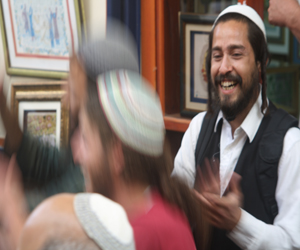The Expression Of The Soul
During the 18th century, a new religious movement, beginning in Poland, sprang up among the Eastern European Jewish community. The founder of this movement was Israel ben Eliezer, also known as the Ba'al Shem Tov or Master of the Good Name. The Ba'al Shem Tov taught that a relationship with God might be sought through music, prayer, and dance.
Dynastic Movement
The Hassidic movement was led by dynasties of rabbis, each known to their adherents as "Rebbe," or teacher. Dynasties were often named after the towns in which they held court. Followers would travel to their Rebbes' towns for special occasions, such as holidays.
The Hassidic movement made popular wordless tunes, known as niggunim (singular form: niggun). Some Hassidic courts keep their favored tunes under lock and key, believing these niggunim to hold special powers that would somehow weaken or become corrupt in the hands of those outside of the community. Favored klezmorim were engaged to play at the various rabbinical courts for Jewish holidays, weddings and other happy events.
Favored Place
Today, the musical tradition continues to hold a favored place in Hassidic custom and other, more modern genres have been incorporated into the Hassidic music style. Rock and pop are some of the styles that have become a part of the Hassidic musical repertoire. On the other hand, the unaccompanied singing style of the niggun continues to be in demand as sung by individuals and choirs and these express the true roots of Hassidic music.
During the 1960's a charismatic Hassidic rebbe named Shlomo Carlebach won the hearts and minds of many Jewish youths at a time when Bob Dylan held sway over the music scene. Carlebach became a very popular musician who added a modern flavor to the traditional Hassidic-style music and to his own compositions. Carlebach performed all over the world, most of the time accompanying his own singing with guitar. Reb Shlomo, as he was known by all, wove anecdotes and stories of a spiritual nature into his tunes. Some called him, "The Singing Rabbi."
Carlebach recorded more than 25 record albums and many Jewish houses of worship employing his singing style into prayer services continue to spring up all over the world. These worshipful gatherings are known as Carlebach Minyans or Minyanim. A Minyan is the Hebrew word for a quorum of ten men, the minimum needed to perform communal Jewish prayer services.

